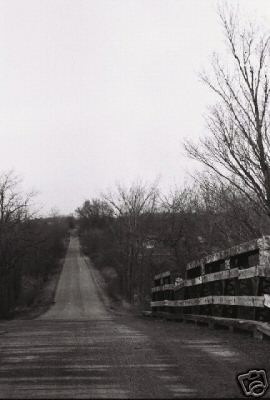Schwarz
View current page
...more recent posts
Starting today, the Museum of the Moving Image presents a weeklong series titled “The Real Edie Sedgwick” that further burnishes her legend and her importance as a muse. The major Warhol-Sedgwick collaborations are all here, including those in which she is the star attraction, like “Poor Little Rich Girl,” and those in which she appears as one guest among many, like “Vinyl.” Also on view are Warhol’s western parody, “Horse”; a fragment from Richard Leacock’s “Lulu,” made for the Alban Berg opera; Andrew Meyer’s “Match Girl” (narrated by Warhol); and Edie’s excised footage from “The Chelsea Girls.” Less happily, there is John Palmer and David Weisman’s “Ciao! Manhattan,” a portrait of her in terrible free fall.
quattroporte
NEW ORLEANS — Googe's popular map portal has replaced post-Hurricane Katrina satellite imagery with pictures taken before the storm, leaving locals feeling like they're in a time loop and even fueling suspicions of a conspiracy.
Making The Modern
MANUFACTURED LANDSCAPES
going up
Three decades after his Pompidou Center in Paris turned the architecture world upside down and brought him global fame, the British architect Richard Rogers has been named the 2007 winner of the Pritzker Prize, the profession’s highest honor.
little red book (love)
A neon sign that has drip, drip, dripped its message—"The Leak Stops Here"—on Los Angeles' Westwood Boulevard for 60 years is coming down next month.
The animated Clayton Plumbers sign is too expensive to maintain, says its owner, Jim Bacon, who bought the building in 1979 and paid $20,000 to restore the 1947 sign six years ago.
"It got too costly to maintain. It was over $1,000 a month," Bacon says. "I finally said, 'No, I'm not going to do it anymore, that's it. I'm taking it down.'"
A crew will remove the sign, which is about 20 feet tall, on April 16, Bacon says.
happy birthday eric (not-god) clapton hour long special archived here :
sounds of blue
The architect Renzo Piano has withdrawn from a project to build an 80-story tower in Boston that would have involved the demolition of a 1960 building by Paul Rudolph that is valued by preservationists, a spokeswoman for Mr. Piano said yesterday. The spokeswoman declined to give a reason for the architect’s decision, but Mr. Piano said earlier this month that he was resisting pressure from the project’s developer, Steven Belkin, to increase the width of the building. Mr. Piano also said at the time that if his project were to proceed, the 13-story Rudolph structure, also known as the Blue Cross/Blue Shield building, would have to be removed to make room for a plaza. Preservationists are battling to save the Rudolph building, whose somewhat ornate exterior ran counter to the then-prevailing Modernist preference for unornamented exterior glass walls. The Boston Landmarks Commission imposed a 90-day delay in the demolition of the Rudolph building on March 13, but Mr. Belkin said that the Boston firm CBT Architects intended to “implement Piano’s design, making appropriate refinements as needed during the design review process.”
Speed / barrett-jackson / Palm Beach
Thu, Mar 29 9:00PM
Fri, Mar 30 6:00PM
Sat, Mar 31 12:00PM

If Rudolph’s buildings aren’t as highly valued as those of some of his contemporaries, that’s in part because they aren’t as well understood. But it isn’t difficult to become familiar with Rudolph’s prodigious output. In a Rudolph-themed road trip last month, with New York as a base, I was able to see nearly a dozen of his buildings in three days.

This Saturday night, you could win a classic mid-century modern Herman Miller chair and at the same time help raise funds to save from demolition a classic mid-century modern beach house by Long Island architect Andrew Michael Geller.my previous postings on the pearlroth house. thanks to google news alert i received this short notice cry for help. i cant believe the pearlroth estate (always with the threat of immediately pending demolition!), please read on, its a horror story. save the
Design Within Reach Studio at 30 Park Place in East Hampton will host a silent auction and raffles from 7 to 9 p.m. to raise the money needed to move the acclaimed Pearlroth House from 615 Dune Rd. in Westhampton Beach to public land five miles farther east on Triton Beach. Built in 1959, its double-diamond shape has been compared to a box kite and a square brassiere, and is widely acclaimed by architects, critics and historians as an influential example of the Hamptons' innovative and witty - and fast disappearing - post-World War II beach house architecture.
The heirs to the Pearlroth House will demolish it unless it can be moved before the spring building season. Current regulations would make it impossible to renovate it as a dwelling without substantially changing it, and its owner offered to donate the 600-square-foot house to the architect's grandson, filmmaker and historian Jake Gorst. He and fellow preservationists say they'll need about $200,000 to relocate and restore the structure, which they hope will house a museum of mid-century architecture at its new site.
For more information about the Saturday fundraiser, which will feature a slide presentation, wine and cheese, as well as the silent auction - and to learn how to make a donation - call Gorst at 631-651-9939.
Are the curvaceous glass forms of the IAC headquarters building, evoking the crisp pleats of a skirt, a bold departure from Manhattan’s hard-edged corporate towers? Or are they proof that Mr. Gehry’s radical days are behind him?
photo group
brownstoner (if for no other reason than the negative comments)
mies van der rohe’s tugendhat house brno, czech republic
From the outside, the Tugendhat House doesn’t look like one of the most important residential buildings of the 20th century: it’s just two white stucco cubes separated by an opening through which a few spiky treetops protrude. But as a tour guide led a group of 10 through this modern home in the Czech Republic’s second-largest city in early March, it was clear that there was much more to the house, the bulk of which is built on the steep hillside that drops away from the street.
WFRT
via vz
Urban density makes sustainable cities possible. The more closely together we live, the more we share amenities, and the less space we take up for our personal needs, the smaller our collective footprints become. But getting more compact means changing the commonly accepted correlation between McMansions and good living.
The Japanese lead the way in proving the benefits of small spaces. By virtue of long-held tradition and the necessity of finding comfort in populous cities like Tokyo, designing homes for tiny in-between spaces has become a modern art.
heres my ny story from earlier today:
doing pickup truck moving job for friend tom w. and unknowingly droped cell phone in street making 1st pickup on w 39th street. heading over 59th street bridge tom g gets call from person who found the phone. they went into the memory and redialed the last made call (me to tom coordinating 1st pickup). he said were in queens and would be back in the city in 1 1/2 hours and that wed call him back then. caller said he worked at broadway and 38th street. i gave tom 20 bucks when we got to the address and he jumped out and took the elevator to the 21st floor. the caller was a male asian receptionist in the garment industry. he was happy to get the $ and i was happy when tom came back with my phone. wooo-dy wooo-hoo
Carbonnier's Inuksuk Residence
This is not the first book to describe this period of radical musical change and social "revolution". Several books have been written by some of the protagonists of the London hippy scene of the mid/late 60's - e.g. Richard Neville (him again) now wealthy back in Oz, Mick Farren describing The Social Deviants (and Pink Fairies) and International Times, 'Lost In the Woods' a biography of Syd Barrett and the rise of Pink Floyd, 'Out-Bloody-Rageous' the Soft Machine biography. Now here Anglo-American record producer Joe Boyd has come up with a most readable gem of an autobiography, concentrating largely on the period 1964 to 1971. The book's title 'White Bicycles', refers to the white bicycles frequently seen then in the Netherlands, (which were for anybody to use - echoing the intended freedom to share 'each other's goods, plough each other's earth', and the related hippy ethos), and of course the hit by one of the first bands he managed, Tomorrow.boyd with terry gross on fresh air / another book review
Boyd relates how he fell into the music business, discovering a long forgotten blues singer was happy to do a gig at a Harvard Uni student hall for 25 dollars as long as he got a ride to the show. Boyd had a whip round taking a dollar each from everybody who attended, and so was able to give the musician a 75 dollars bonus. Then the summer jobs working for record labels. Or acting as goffer at the Newport Jazz & Folk Festival in 1965, when he claims rock came about i.e. when Dylan brought his electric folk band on stage with Mike Bloomfield and Al Kooper in that line-up, so shocking the folk purists such as Pete Seeger, that they walked out of the Festival. Then road managing ancient blues singers around Europe. The love affair with the UK, after Boyd talked himself into a scouting job for talent for Elektra Records, for example claiming how close he was to grabbing Floyd for the label. Discovering Sandy Denny and Fairport Convention, and then getting Denny into the band. Being stunned by Nick Drake's demos and then being more stunned that nobody bought Nick Drake's records when first released - although when John Cale asked Boyd who was new, on hearing a work-in-progress tapes for '5 Leaves Left', Cale went straight round to Drake's digs, sorted out a couple of tunes, then they recorded these together the following Monday. The rise and fall of the Incredible String Band.
